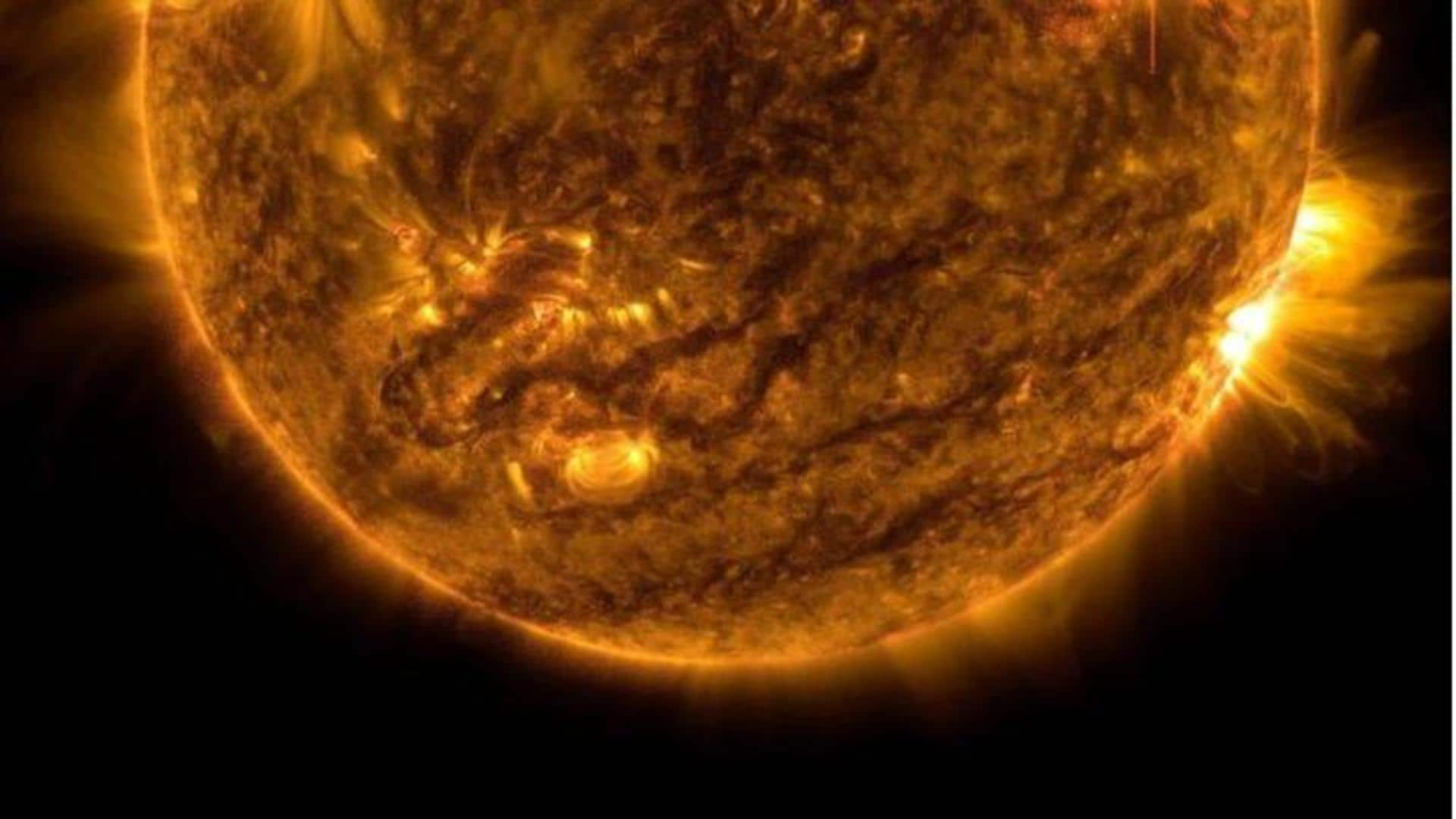
Signals from Sun could help scientists accurately predict solar flares
What's the story
Scientists have come up with a new way to estimate from where and when the next solar flares might arise. Signals from the corona—the upper layers of the solar atmosphere—can help identify which regions of the Sun are more prone to discharge solar flares. This new study could ultimately improve predictions of flares and space weather storms.
Context
Why does this story matter?
Solar flares are energetic bursts of light and particles released from the Sun. Intense solar flares can jeopardize radio communication systems on Earth, navigation signals, electric power grids and can even pose a threat to spacecraft and astronauts. Recently, in October 2022, solar flares from sunspot AR3110 hampered communication systems and hindered rescue operations in hurricane-hit regions of the US.
Study
Small flashes in corona could serve as flare signals
Scientists have been studying different regions of the Sun to better predict solar flares. Previously, researchers have studied how activity in the Sun's lower layers—like the photosphere and chromosphere—can provide clues to imminent flare activity from the active regions. The latest study has found that "above the regions about to flare, the corona produced small-scale flashes - like small sparklers before the big fireworks."
Official words
The results might serve as a "new marker"
"We can get some very different information in the corona than we get from the photosphere, or 'surface' of the Sun," said KD Leka, lead author of the new study. "Our results may give us a new marker to distinguish which active regions are likely to flare soon and which will stay quiet over an upcoming period of time."
Data
Scientists have used a new image database for the study
For the study, scientists have used a newly created image database of the Sun's active regions captured by NASA's Solar Dynamics Observatory (SDO). The database comprises eight years of images taken in ultraviolet and extreme-ultraviolet light. This is the first time that a database of this kind is available for the scientific community, said Karin Dissauer from NorthWest Research Associates (NWRA).
Information
The study can help in the better prediction of solar flares
Upon analysis, it was revealed that small flashes emanated from the Sun's corona before each solar flare. The insights provided by this study will aid in the development of new tools that can help forecast solar flares.